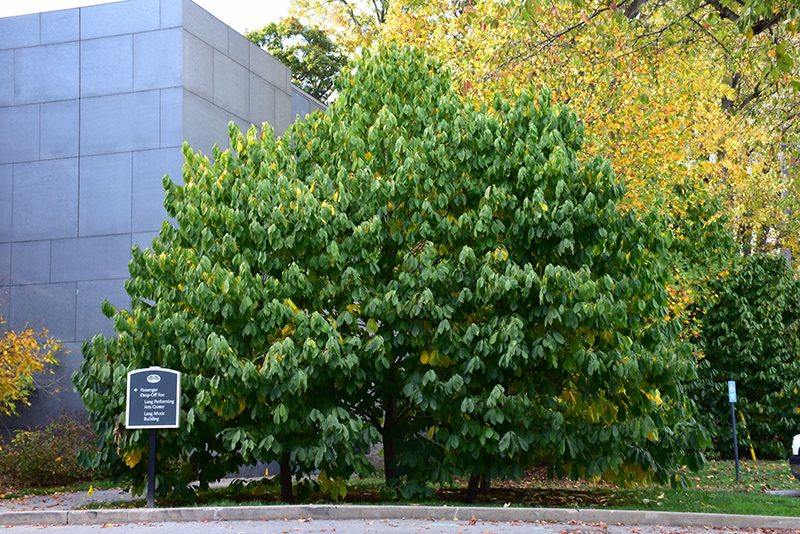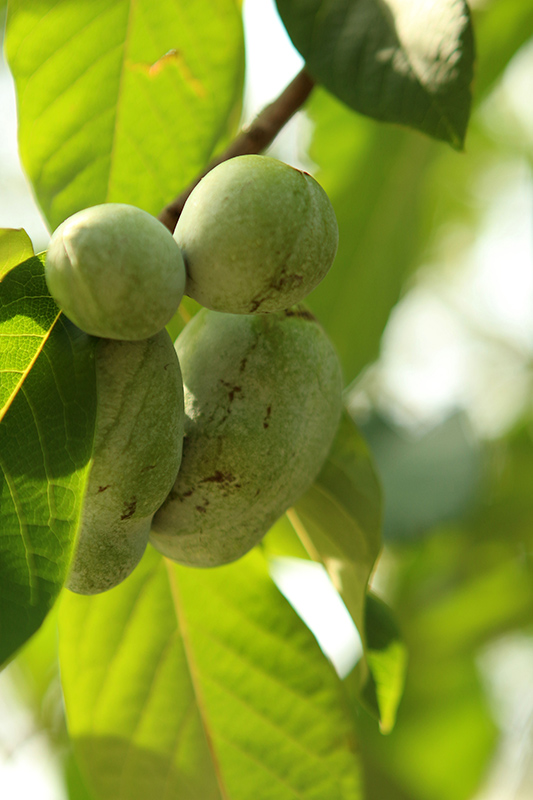Height: 20 feet
Spread: 15 feet
Sunlight:
![]()
![]()
Hardiness Zone: 4b
Other Names: Pawpaw Apple, False-Banana, Poor Man's Banana
Description:
Small spreading tree with delicious edible fruit, similar in taste to a banana/pear with a custard consistency; fruit is sweet, rich, high in vitamins, however flowers can have a disagreeable fetid odor; tree is a host for the zebra swallowtail butterfly
Edible Qualities
Common Paw Paw is a small tree that is typically grown for its edible qualities, although it does have ornamental merits as well. It produces large green oblong fruit with creamy white flesh which are usually ready for picking from mid to late summer. The fruits have a sweet taste with a mushy texture and a pleasant fragrance.
The fruit are most often used in the following ways:
- Fresh Eating
- Cooking
- Preserves
- Wine-Making
Features & Attributes
Common Paw Paw features unusual lightly-scented nodding purple flowers from mid to late spring. It has dark green deciduous foliage. The large oval leaves turn an outstanding lemon yellow in the fall. It features an abundance of magnificent green berries from mid to late summer. The fruit can be messy if allowed to drop on the lawn or walkways, and may require occasional clean-up.
This is a multi-stemmed deciduous tree with a distinctive and refined pyramidal form. Its relatively coarse texture can be used to stand it apart from other landscape plants with finer foliage. This is a high maintenance plant that will require regular care and upkeep, and is best pruned in late winter once the threat of extreme cold has passed. Gardeners should be aware of the following characteristic(s) that may warrant special consideration;
- Suckering
Aside from its primary use as an edible, Common Paw Paw is sutiable for the following landscape applications;
- Accent
- Naturalizing And Woodland Gardens
- Orchard/Edible Landscaping
Planting & Growing
Common Paw Paw will grow to be about 20 feet tall at maturity, with a spread of 15 feet. It has a low canopy with a typical clearance of 3 feet from the ground, and is suitable for planting under power lines. It grows at a fast rate, and under ideal conditions can be expected to live for 40 years or more.
This tree can be integrated into a landscape or flower garden by creative gardeners, but is usually grown in a designated edibles garden. It does best in full sun to partial shade. It does best in average to evenly moist conditions, but will not tolerate standing water. It is not particular as to soil type, but has a definite preference for acidic soils. It is somewhat tolerant of urban pollution. This species is native to parts of North America.









